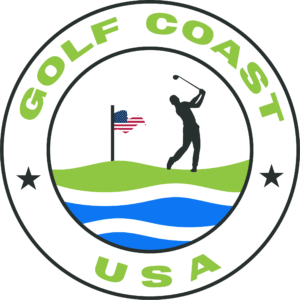Title: Golf Course Architecture: Iconic Designs in Myrtle Beach
As a Myrtle Beach local and an enthusiast of the classic game of golf, I am delighted to share insights into the awe-inspiring golf architecture in the region. Home to over 80 picturesque golf courses, Myrtle Beach is often described as the ‘Golf Capital of the World.’ This claim is supported not just by the sheer number of courses, but, more importantly, by the intriguing diversity and innovation displayed in their design and layout. Let’s explore some courses that offer phenomenal golf architecture.
Taking the lead is none other than the Dunes Golf and Beach Club, unarguably one of the most prominent designs in Myrtle Beach. Designed by Robert Trent Jones Sr. in 1948, the course reflects the golden age of golf architecture. The course’s rolling fairways, strategic bunkering, and meticulous use of native sandy waste areas, blend seamlessly with the natural coastal terrain. Its most impressive hole, ‘Waterloo,’ possesses a unique dogleg design, making it both challenging and visually impressive.
In stark contrast to Jones Sr.’s classical approach, Pete Dye’s famously challenging design can be found at the Barefoot Resort’s Dye Club. Characterized by Dye’s playful usage of native grasses and complex green structures, the course provides a stern but rewarding test for golfers of all levels. Notably, the 9th hole completely encapsulates Dye’s philosophy with natural sandy areas and a tough approach towards a well-protected, small green.
True Blue Plantation is another outstanding refresher in golf course design. Mike Strantz, the artist behind the course, employed bold, even avant-garde techniques. Utilizing the fertile low-country landscape, he concocted wide fairways, vast waste areas, and dramatic green complexes. The entirety of each hole is visible from the tee, but golfer beware, Strantz loved illusion and deception in his designs.
Meanwhile, Jack Nicklaus’s design at Pawleys Plantation Golf & Country Club integrates beautifully with the surrounding marshland. The par-three 13th hole is the show-stealer, with a green attached to the mainland via a wooden bridge. The course provides an engaging connection with nature – all the while offering a stern golfing challenge.
Arnold Palmer brought his ‘go for broke’ style to the Rivers Edge Golf Course. With seven holes perched along the Shallotte River, the course’s raw beauty is captivating. But, the standout design feature of this course is the 9th hole, compelling golfers to make risk-reward decisions set against the backdrop of the beautiful river.
Lastly, the Legend’s Parkland Course, a distinct creation of Larry Young, offers a traditional, tree-lined layout with deep-faced bunkers and vast, contoured greens. It strikes a sophisticated balance integrating the natural elegance of the environment with old-school design elements.
Across these courses, every designer brought their unique interpretation and design philosophy to each hole, tee, or fairway, making a remarkable contribution to the golf architectural landscape of Myrtle Beach. This diversity in design not only cultivates a rich golfing culture but also offers unique, breathtaking vistas for golfers to enjoy.
Whether you’re an architecture enthusiast, a nature lover, or a golf purist, Myrtle Beach’s golf courses offer an unparalleled golfing experience. These architects, through their innovative designs, have succeeded in creating golf sites that engage golfer’s strategy, test their skill, and provide aesthetically satisfying vistas. So, here’s your invitation to explore not just a game, but a beautiful dance of art, nature, and sport in the heart of the Golf Capital of the World, Myrtle Beach.

Leave a Reply